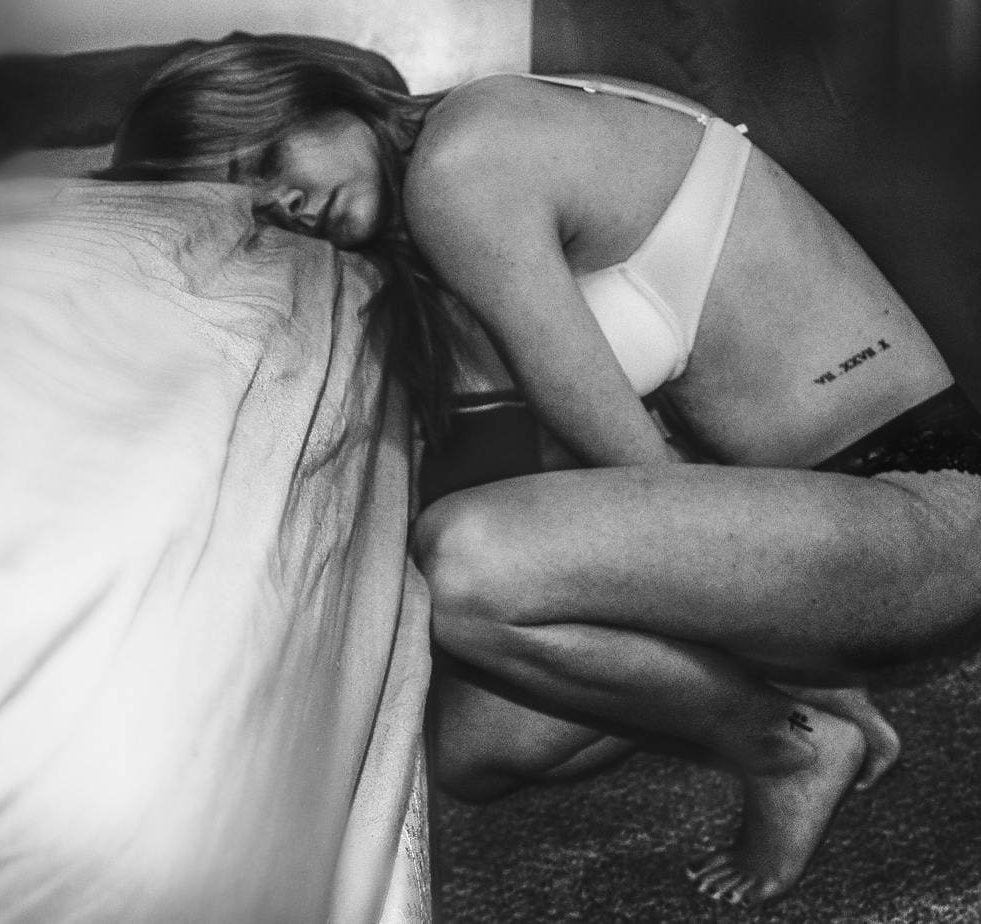The month of March marks National Endometriosis month, and with so many people around the globe suffering from this condition, it’s about time that those with endo are no longer labelled as “people with ‘just bad’ periods.”
If you have endometriosis,, you can be assured that you’re not alone. If you know someone with this condition, take note of this post.You may feel like you can’t do anything to help, but simply having the knowledge to support your friends and family, and yourself, and validating the pain and experiences tied to endometriosis can be a huge help in itself.
But first thing’s first, let’s define this chronic condition.
What Is Endometriosis?
Healthline defines endometriosis as:
“a disorder in which tissue similar to the tissue that forms the lining of your uterus grows outside of your uterine cavity. The lining of your uterus is called the endometrium.”
This growth of internal tissue externally to the uterus can cause severe pain along with a whole pick-n-mix of other side effects.
Usually, endometriosis impacts the ovaries, fallopian tubes, and the tissue that lines the pelvis.
In rarer cases, endometriosis can spread outside of the reproductive organs, to the bowel, for example.
There’s nothing wrong with endometrial tissue. It does its job, thickening and breaking down when you’re on your period. But, if it’s growing in the wrong place, there’s no way for it to leave the body.That causes it to get stuck, creating internal wounds. The more it grows, the more it acts as a glue between your organs, resulting in them sticking together.
Unfortunately, that is exactly as painful as it sounds.
What Is The Main Cause Of Endometriosis?
There’s not enough research out there to clearly state what causes endometriosis.
While the first case of endometriosis was diagnosed in 1860, (they called it a ‘chocolate cyst’ and we will forever be bitter about this as we love chocolate and it’s now tainted), it remains a condition very much in the dark.
That said, with so many people having endometriosis, researchers are now delving into their case studies to try and find patterns.
The current research suggests that endometriosis can be caused by:
- Difficulties with your period
- Genetics
- Problems with your immune system
- Too much of the hormone oestrogen
- Having a hysterectomy or a c-section
However, it’s important to note that there is no definitive ‘cause’.
We’re hoping to get a clearer answer in the future, but right now, we’re still waiting for science to catch up to the condition.
Endometriosis Symptoms
Some people who have endometriosis will have no symptoms.
Some people who have endometriosis will have all the symptoms.
It depends on the person. However, the most common symptoms of endometriosis are:
- Severe period pains
We’re not just talking ‘cramps’. We’re talking about extreme pain.
- Pain during sex
This type of pain can feel like ‘cramps’ when you’re in certain sex positions. Some people have described it as a ‘stabbing’ feeling in their stomach.
- Pain during bowel movements
People who have had children state that the first bowel movement after childbirth is often excruciating. This can be a similar experience and pain marker for those with endometriosis.
- Pain during ovulation
This can feel like a stronger version of period pains when you’re ovulating.
- Infertility
People who have endometriosis can find it difficult to conceive.
Speak Endo has put together an online quiz which sees how many endometriosis symptoms you have. This isn’t a formal diagnosis, but if you’re experiencing any of the above and you think you might have endometriosis, check out their quiz. Make sure you book a doctor’s appointment if you have any of the symptoms listed.
What Are The Four Stages Of Endometriosis?
There are four stages, (or levels), of endometriosis. Each stage increases in severity.
Stage One Endometriosis
Having stage one endometriosis means you have very small injuries, scars, or lesions. They might be found on the organs which line your abdomen or pelvis.
Stage Two Endometriosis
Stage two is a slightly more severe case of endometriosis than stage one. You’ll have more implants that are marked deeper, and there might be some more significant scar tissue.
Stage Three Endometriosis
With stage three endometriosis, it’s not uncommon to have cysts on your ovaries. This can cause moderate pain. You’ll also have thicker bands of scar tissue.
Stage Four Endometriosis
This is the most extreme and painful stage of endometriosis. It’s the most widespread and you’ll likely have large cysts on your ovaries. Stage four endometriosis can be debilitating.
How Do You Live With Endometriosis?
The difference between bad periods vs endometriosis
The cramps, the backache, the mood swings: being on your period can be a tough time.
But can you imagine having periods that are so heavy that they leak through a sanitary pad within an hour?
Or having stomach pains that cause you to writhe around in pain, and that are so severe that you are physically sick?
Can you imagine having to tell your boss that you can’t go to work for the next few days because it hurts to even walk a few steps without your hot water bottle?
Unfortunately, for many living with Endometriosis, these are just some of the examples of their experiences day to day. By understanding and recognizing these symptoms, we can collectively be ready to support those of us struggling with endometriosis, whether they are just beginning to discover they have endometriosis, or if they have had it for a long time.
Click here to read one person’s experience of living with stage four endometriosis.

Written by the Killing Kittens team.

